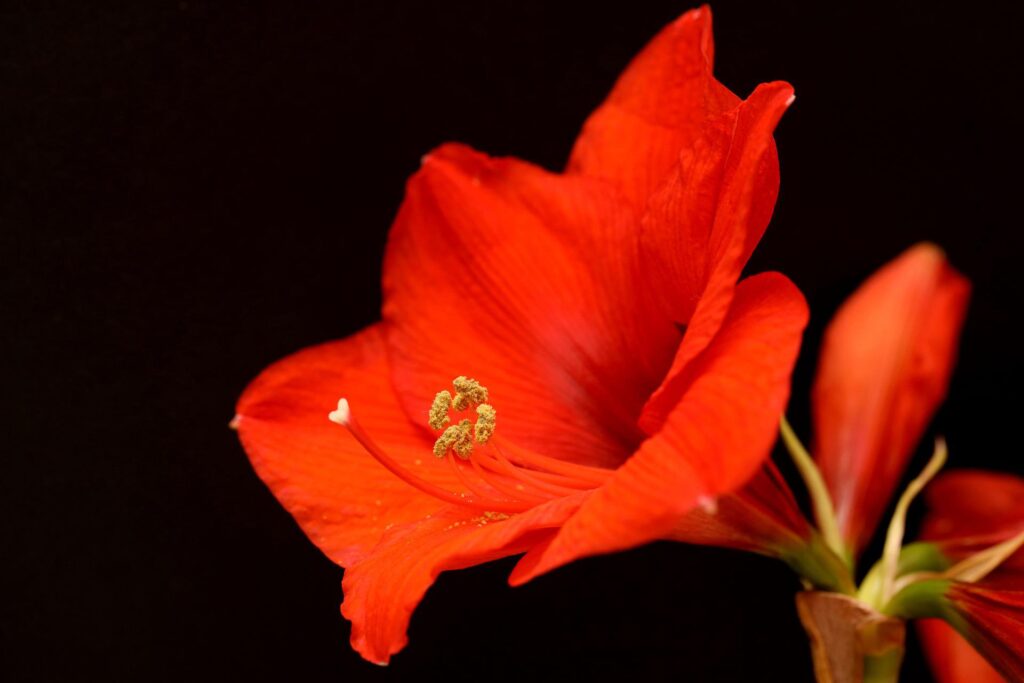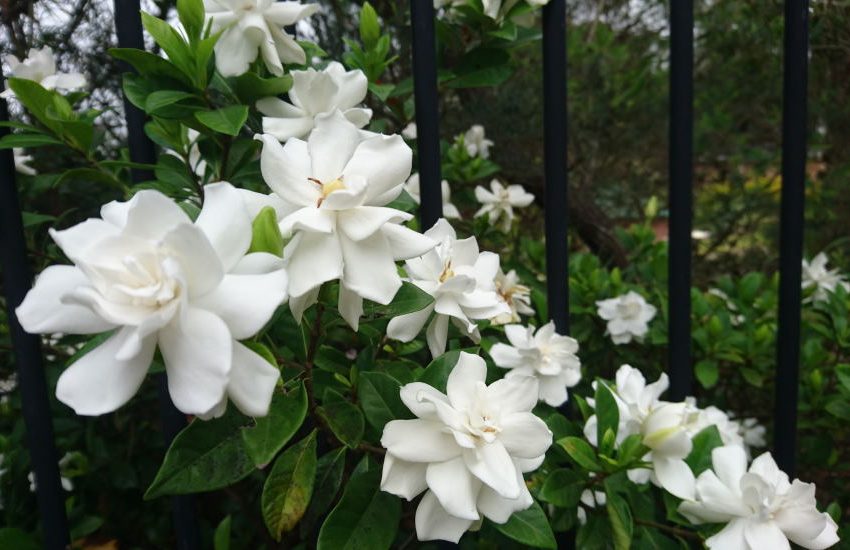Amaryllis flower: How to Plant and Repot
The Amaryllis, spectacular-looking flowering bulbs, belonging to the family Amaryllidaceae are native to the Western Cape, a region in South Africa. These exotic-looking flowers are trumpet-shaped. They are borne on leafless stalks, which are usually up to a height of around 1 to 2 feet. This appearance makes the flowers look appealing and highly decorative in nature.
This flower, gets its name, Amaryllis, from a Greek word known as ‘Amarysso’, which means ‘to sparkle. This proves the appealing look of the flower, amaryllis. These flowers are quite huge in size and can grow up to 10 inches. However, the average size usually ranges from 4 inches to 10 inches. These flowers can also be in various forms. They can either be in a single form or can be in a double form. These pretty flowers also come in various colors. These shades are highly appealing to the eye.
The most common shades of these flowers are red, white, and pink. These shades are the most popular. There are other unique and rarer shades in which the amaryllis grows, such as salmon, apricot, burgundy, and so on. An even more unique blend of colors may be noted in very few types of amaryllis, where there is a blend of two colors, such as a blend of purple and green. Thus, Amaryllis are exotic, beautiful flowers and serve as great decorative flowers.

Choosing bulbs
The vital and first part of growing amaryllis is to choose the bulb. This stage is the most important stage as it determines the development and nature of the pant. Thus, choosing the bulb has to be done with utmost care. In order to choose a bulb, one must look for the biggest bulb possible. A larger bulb is preferred because they tend to produce more stalks and a larger bulb also ensures that the flower will bloom in the first year of planting.
Larger and bigger bulbs also ensure that the number of flowers is also more in number. The bulb so selected must be in a healthy condition without any signs of damage. The bulbs must be dry and quite firm. Bulbs that are injured or have mold in them must be avoided at all costs as they are not in a perfect condition to produce stalks and bloom. The bulbs may also show growth of new parts such as leaves or buds, this is perfectly normal and expected and should not cause any worry while choosing the bulb.
These bulbs which expose new green growth are very preferable as it shows signs of fertility and promises development. While choosing a bulb, there may be some cases, where the bulb may have an offshoot growing from its base. This offshoot can later be separated and used as a new bulb. Thus, these bulbs are also one of the bulbs that can be chosen to grow the amaryllis. Thus, choosing the bulb is a vital stage and has to be done with some knowledge in it.
See Also: Money Plant
Planting of amaryllis flower
Planting the chosen bulb is the next stage in growing the amaryllis. The amaryllis requires certain care and attention. Thus, while planting various steps has to be observed and followed in order to ensure better productivity. The amaryllis can be planted in pots and containers. The pots used are preferred if they are narrow in nature as amaryllis tends to grow better in narrow pots.
The pots can however be made of any material. They can be made of metal or ceramic or even terracotta. Amaryllis tends to grow and thrive in all these categories just the same. The bulb chosen now has to be made sure that it is dry. The bulb should be planted only if it is firm and dry in a healthy condition without any molds in it. The bulb has to be planted in a container that has a drain hole as this prevents excess water.
Darin holes are very important as they ensure that there is no water clogging taking place. This drain hole is very important as it ensures that the root of the bulb is not affected by rot. In order to promote and develop the development of the roots, the pot has to be chosen in a convenient size. The chosen pot must have at least an inch of width bigger than the bulb. The pot must also have twice the space in it to allow the growth of the roots from the bulb.
The pot must be spacious and bigger than the bulb so as to allow the growth and development of the roots which will ultimately lead to the growth of the Amaryllis. The soil used in the pot has to be fertile. The amaryllis completely depends on the soil in the pot. Thus, this has to be filled with organic materials, manure, and all the nutrients necessary for the plant. The soil must be fertile and well-suited to the needs of the Amaryllis. There can be the use of peat moss to add fertility to the soil.
The bulb of the plant must be placed in such a type of mud, which could support the growth of the plant. The bulb must be planted in such a way that a portion of the bulb is visible above the soil. Usually, one-third of the bulb has to be visible above the soil, while two third of the bulb must be firmly buried around the soil. To hold the bulb firm, more soil can be added to the sides and can be tapped down.
This would ensure that the bulb is firmly planted. Once the bulb is planted and all the excess water is drained from the water hole, the pot can be positioned. This is the process of planting, which has to be followed with minute care and attention which will ensure that the amaryllis grows quite well.
Growth in Amaryllis flower
The growing stage of the amaryllis also requires a lot of care and attention. These factors must be kept in mind while caring for the plant in order to aid its growth and development. The amaryllis loves moisture and thrives better when the soil is moisture packed. The amaryllis hates excess water. Thus, water clogging must be prevented at all times and at any cost. The method of watering is quite simple.
Anytime the top layer of the soil gets dry and cracked, 2 inches of water ought to be poured. This could be done once in a couple of days. However excess water must be avoided. The need for a drain hole is absolutely necessary as it solves the problem of excess water. Due to the presence of a drain hole, the risks of a bulb rot or a root rod is prevented.
Fertilizers with phosphorus content can be used in order to ensure the successful growth of the plant. These fertilizers can be added every time the plant is watered. These fertilizers are also recommended to be used when the plant is just newly planted the fertilizers that are used would be more effective when they bear the numbers 10-15-20. The numbers 12-15-20 are indicators of the amount of the specific nutrients in them. Thus, the most effective fertilizer has 10% of nitrogen and 15% of potassium, and 20% phosphorous. These methods could lead to greater development of the plants.
The plants may begin to flower within a year. Once the plant begins to flower, it must be kept in direct sunlight. Plants with buds must be kept in direct sunlight in order to flower. The sunlight helps the buds to flower very soon. The flowers may fade over time. Once the flowers fade, they ought to be cut off. This is necessary since this prevents seed formation.
The formation of seeds can lead to the energy being deviated from the flowers and the bulbs. This could prevent the formation of flowers and could stop the plant from blooming to the fullest. The stalks also ought to be removed when they are old. This would be indicated by de-colorization. The stalks turn yellow, indicating that it is time for their removal. However, no green stems must be removed at any time. Removal of green stems has a negative impact as the green stems promote photosynthesis.
Photosynthesis gives enough energy for plants to grow. This is very important as this energy is the one which helps the plants to grow and develop. A well-taken-care plant is sure to produce green stalks in the following flowering year. A plant that fails to produce green stalks in the next year shows that the plant has lacked sufficient nutrients the previous year.
Thus, it is necessary to produce sufficient nutrients to ensure that there is a continuous growth of green stalks. A plant must be kept healthy and must be provided with sufficient nitrites in order to support its blooming and growth. Thus, these are the necessary things to be followed in the growth of amaryllis.
Controlling Blooming of Amaryllis Flower
Unlike most blooming plants, the amaryllis does not require any dormant period. These plants will continue to grow and bloom regularly. However, they can be provided with a dormant period. During this dormant period, they will not be allowed to bloom.
However, the stalks will be allowed to grow and this stage usually requires the use of very little energy. The bulbs go into a passive stage during this period, saving up energy. The plants ought to be bought to a place with shade. They must be stored in the dark and cold, preferably indoors. The temperature must be around 50 to 60 degrees. This temperature will cut off all activities of blooming. The flowers will not grow if kept in the dark for around 18 weeks.
There may be cases where mold may grow on the plant. In such cases, the mold has to be removed from the plant as soon as it is noticed. In case of any new growth, it ought to be removed. The new growth can also be cut off and used as a new plant. The plants will mostly not show any kind of new growth over the next 12 weeks. Then the plant can once again be placed in the sun and the usual care routine could be followed and the plant would once again bloom.
Repotting of Amaryllis flower
Plants can be repotted if they overgrow their pot. They could also be repotted in order to rearrange or change the soil. The plants are best repotted when they are in their dormant stage as this is the stage where only less energy is consumed. Thus, the plant will be able to thrive in a new environment too. The plant must be given a gentle lift from below and lifted along with its roots. The plants so lifted must be planted in another pot and then the same methods of care must be followed for the growth and development of the plant.
Conclusion
Amaryllis, one of the most beautiful plants, is widely looked at all over the world for its outstanding beauty. These flowers require a moderate level of care and attention. By following these methods, the amaryllis can achieve great growth and the plant will have beautiful blossoms. These flowers behold great beauty making the amaryllis as one of the most preferred decorative plants.


